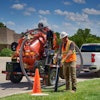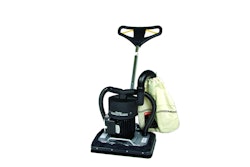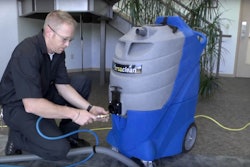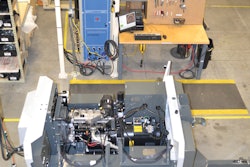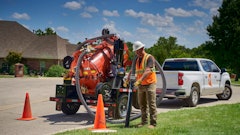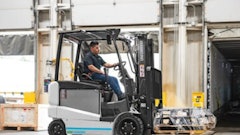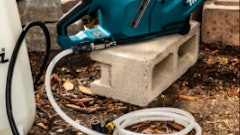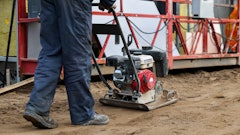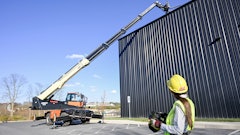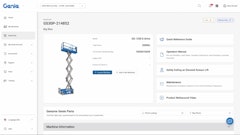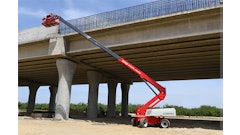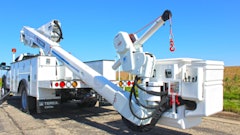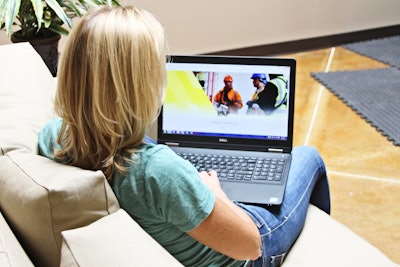
I earned my first PAL Card five years ago at an NES Rentals branch in Des Plaines, IL with Gary Riley as my trainer. Dead serious, but with a flair for the theatrical, Riley spent about eight hours training us that day, with both classroom and practical instruction.
Riley is a well-known and nationally respected trainer. Like the man himself, his lessons are not easily forgotten, since he conveys his message with authority and passion. We all left our training that day with not just our PAL Cards, but also with a healthy respect and understanding for what it means to work safely at height.
High-quality training requires both theory and practice
Like many who receive aerial work platform training, I made a significant time commitment to getting it done. Since the training was taking place in the Chicago area, it meant a two-hour drive for me to get there. I had to take a day off from work to do it too, but at the time, there was no alternative. As it was, I spent a full day learning about the theory of AWP safety, testing my knowledge and then demonstrating it in a practical way, and when I left at the end of the day, I felt qualified to operate an AWP.
“The importance of quality, consistent, compliant training cannot be emphasized enough,” says Tony Radke, manager of safety education at NES Rentals. “Often times the industry has been willing to accept training shortcuts in the interest of time and cost savings with tragic results. The introduction of IPAF’s new eLearning module for theory training, combined with comprehensive practical evaluation, provides unmatched flexibility in scheduling AWP operator training. It ensures trainees are provided the necessary theory knowledge while at a later time, allowing them to put that knowledge into practice in a controlled training environment demonstrating proficiency in the actual operation of machines.”
Modern learning techniques
When it became time to renew my PAL Card this year, things had changed. I was able to use IPAF’s new eLearning module, a self-paced, computer-based program. Instead of driving hours to sit in a classroom, I simply signed up for IPAF’s online course and proceeded to complete the theory portion of the training on my own terms, in my own home.
I began the course one evening after work, intending to finish it in one sitting since I was scheduled to complete the practical evaluation the following afternoon. It became apparent that this would not be possible, however. The online course is definitely not an abbreviated version of the classroom study. It takes just as long and is just as thorough. What’s different, however, is the trainee has the ability to stop and start when they need to, which offers benefits including convenience, flexibility and increased retention.
I spent about two hours with the course that first evening. There are 11 sections in the module, the last being a written test. Throughout the sections, I was able to read the lesson while at the same time, an audio recording followed the same script. The training is designed to stimulate visual and auditory learning simultaneously. Throughout, there are questions that require the trainee to drag objects to the correct field, click on a certain portion of a graphic, and so on. According to Tamlin Roberts, CEO of Bolt Learning, which helped develop this latest training module for IPAF, these types of exercises stimulate “kinesthetic learners” and reinforce what is seen and heard.
After about four sections, I’d had enough for one night and decided to complete the course the following day. Having been through the program now, my recommendation is to nibble at the course in small bites, rather than attempting to swallow it all in one sitting. We all know what happened to the information we crammed before our high school chemistry tests - gone the minute the test was over. There’s definitely some wisdom to the concept of “sleeping on it.”
eLearning is not the easy way out
No question, the eLearning module is challenging. Despite the seamlessness of the interface and the clean, simple structure of the course material, I still got a few answers wrong, giving me a final score of 85%. There is no rushing this course. You simply have to pay attention and focus in order for the information to sink in.
“The introduction of Bolt’s new eLearning system for IPAF operator training has been a significant advancement in the eLearning process,” Radke explains. “By addressing multiple learning styles, the Bolt system helps ensure adult learners can maximize retention of the information to help increase safe operation of aerial work platforms.”
The practical portion of IPAF’s training hasn’t changed, it’s just as thorough and challenging as it was five years ago. I took the scissor lift course, once again at an NES Rentals branch, this time in Brookfield, WI with Tony Radke as my trainer. It’s important to note that trainees need to complete their practical evaluation at an IPAF-approved training center in order to receive their PAL Card. Use the training center locator at www.ipaf.com to find your nearest IPAF-approved training center.
I’ve been fortunate to have two excellent trainers in my quest to earn and keep my PAL Card up to date, each with their own distinct style of instruction. Radke’s manner was very much like a coach. At one point in the training, I was required to operate the scissor lift at full height and walk out onto the deck extension to touch a girder inside the warehouse we were in. Despite weak knees and a rapidly beating heart, I was able to complete the exercise with some encouragement from my trainer. In the process, I once again realized the challenges facing people who perform work at height every day.
In the practical evaluation, trainees are required to demonstrate proficiency in pre-start inspection and operation. This time, I took the course with two classmates. It took us all afternoon, and I can honestly say I feel proficient in scissor lift operation… for now. As a journalist taking the course for research, I’ll have no opportunity to reinforce what I learned with practice. But my classmates will and it’s good to know they received such complete and thorough training.
In the end, I don’t believe old-school classroom instruction is diminished by modern training techniques. Certainly there are people who prefer traditional methods and circumstances might even make those a better choice in some cases. But in today’s professional environment, where everyone is doing more with fewer people and resources, the ability to sign your employees up to complete high-quality training when and where it’s convenient for them is a tremendous leap forward, for it will ensure more people actually get the training they need. There are simply no more excuses.
Take IPAF’s operator eLearning: Free for a limited time
Don’t miss the chance to take IPAF’s operator eLearning module from the comfort of your own location – free from September to December 2016.
About eLearning
IPAF’s operator eLearning is flexible and interactive. It engages trainees with games, quizzes, videos and simulations. You can complete the theory part anytime, anywhere, on any device, at your own pace, whenever internet access is available.
Where to register
Go to www.ipaf.com/safeMEWPs and follow the link to take the free eLearning. This free offer is available from September to December 2016. After this limited time, eLearning can be purchased directly for $75 from IPAF.
What next?
If you’ve completed the eLearning, well done! You must also demonstrate hands-on operational proficiency to complete operator training. To accomplish this, you have the option of completing this practical assessment and testing at an IPAF-approved training center to obtain a PAL Card (Powered Access Licensed-Registration) as proof of training. Completing the eLearning alone does not qualify you as an operator. Industry standards require both the knowledge gained in the eLearning theory session and actual operation of the equipment to demonstrate proficiency.
IPAF’s eLearning module is state-of-the-art and taking operator training to the next level. Try this new learning experience for free. Visit www.ipaf.com/safeMEWPs to take your course.

